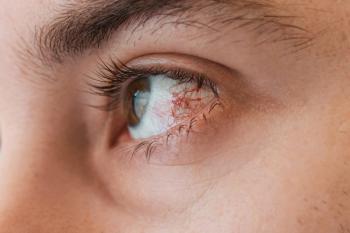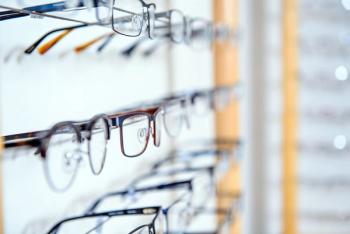
How technology changed optometry’s role in cataract comanagement
Cataract surgery has entered that technology zone enabling surgeons the opportunity to provide sutureless and bladeless surgery, in vivo axis orientation and aberrometry measurements, and now, remove the drops from this pervasive procedure.
Times-they are a changing. Look mom, no hands! Look, no wires! No ethernet connection necessary. No phone cord needed. No wires. No need to remove the corneal flap. No key to open my door. No reason to remove the whole capsule. No reason to actually even use drops for cataract surgery. Driverless cars. Pilotless planes. No sugar in my soda. No meat in my burger. Wait, back up. No drops for cataract surgery? What you talkin’ ‘bout, Willis?
Changing landscape for ODs
Cataract surgery has entered that technology zone enabling surgeons the opportunity to provide sutureless and bladeless surgery, in vivo axis orientation and aberrometry measurements, and now, remove the drops from this pervasive procedure. The advent of technology creates a changing landscape for the optometrist who is following his patients after surgery.
Related:
I remember a time when I saw a perfectly round anterior capsulotomy performed by the femtosecond. I was astounded and marveled at the precision of the cut.
However, the capsule was adhering to the endothelial cells of the patient’s eye.
This particular patient was seeing 20/15 and had absolutely no visual problems, yet the optometrist who was following this patient had some concerns. The capsule eventually folded on itself and left a triangular flap of tissue on the superior corneal endothelium.
The call I got sounded like this: “Dude, I think the cornea is breaking up from in the inside. The patient is only visiting, but can you look at him before he goes blind, or worse, his insurance runs out?” Newer technology adds simplicity but also potentially adds new challenges for management, like your battery dying on your PDA. Dropless cataract surgery falls into that category-just no batteries.
New therapy
Omidria (phenylephrine and ketorolac injection, Omeros) is the first FDA-approved medication for anterior segment surgery to be delivered intracamerally.
Omidria, which contains the mydriatic phenylephrine 1% and the nonsteroidal anti-inflammatory drug (NSAID) ketorolac 0.3%, is added to 500 ml of balanced salt solution to irrigate the anterior chamber during cataract surgery. It is indicated to maintain the pupil’s size by inhibiting intraoperative miosis and to reduce postoperative ocular pain.
Related:
This medication creates an opportunity to provide a constant mydriasis during the whole procedure. The use of balanced salt solution in the surgery is important to wash out the nucleus, and yet, it also washes away the preoperative drops.
Omidria has the opportunity to maintain a stable pupil size that will decrease complications associated with diameter-related complications. The concern some surgeons have is the use of ketorolac and its long-term effects on macula edema. Thus, management of these patients should include a close analysis of the macula and early signs of any cystoid changes.
Simplifying post-op
In another opportunity to break the shackles of drops, a movement is growing to place the antibiotic and steroid in the eye during cataract surgery. Yes, truly making the post-operative management more simplified and cost effective. Evidence has grown to support this use in other countries, where over 400,000 surgeries had been performed with this alternative drop method with a 0.029 percent endophthalmitis incidence.1
Imprimis Pharmaceuticals is the first company to bring to market a commercially available combination of triamcinolone and moxifloxacin. The combo drug is delivered transzonularly using a bent cannula. The goal of the anterior virtues placement is designed to delay the drug clearance and aid in any postoperative cystoid macular edema.
Thus a dropless management of cataract surgery will help the patients who have difficulties with drop placement, lowering the patient cost and compliance. Yet, this also means a new way for optometrists to manage the cataract patient.
Related:
The bolus of medication needs to be placed in the region between the equator and the capsular bag. Although some surgeons have reported that 95 percent of their patients healed without any topical therapy,2 there is a learning curve that is needed so that the surgeon can ensure the sufficient dose makes its way through the zonules.
The patient will present with inflammation that will necessitate the use of topical steroid instillation. The combination medication will create a visual disturbance that may take days to clear.
Snow globe medication
That wow factor, as well as the drops, is replaced with a dose of verbal Valium needed to assure the normality of the scenario. The medication breaks up in the vitreous and resembles floaters, most notably in the first few days following the surgery.
Although each patient is different, the typical asteroid field will last for the few weeks following the surgery. I have a snow globe that I use to represent the suspension of the steroid in a bottle, although I have a Shake Weight to serve the same purpose, “Shake it before you take it!”
The snow globe is a great way to demonstrate the visual obstructions. It is equally important to realize the commonality of these visual changes and differentiate them from a possible retinal detachment, although rare, that may occur.
These tramicinolne particles may make their way into the anterior chamber and thus resemble anterior cells. The eyes may be quiescent, yet it is still a challenge to know the exact makeup of the particle. Thus, treat these as possible inflammatory cells, and start the patient on a topical therapy.
Another drop that may have to be added is a topical hypotensive medication following the surgery. Steroid responders make up a large percent of the population, and a steroid is injected into the vitreous creates a risk of prolonged intraocular pressure (IOP) elevation. Managing doctors should follow the IOP of these patients closely and most notably patients who have been diagnosed as steroid responsive.
Time will tell if droplets will go the way of wireless tech or driverless cars.
Frankly, we are such a mobile society that the notion of having to plug in my computer or being leashed to a phone seems laughable. However, there is something to be said about being in control of my car-the feel of the steering wheel and the pedal pressure to ensure my proper speed (too fast, most often).
The converse, reduction of out-of-pocket expenses and compliance sure do make a droplets cataract surgery seem appealing. Perhaps when I am sitting in my car writing the next article, while my car is taking me to Laguna Beach, I will feel differently, much like when you get over the hurdle of a new drop regimen.
References:
1. Friling E, Lundstrom M, Stenevi U, et al. Six-year incidence of endophthalmitis after cataract surgery: Swedish national study. J Cataract Refract Surg. 2013 Jan;39(1):15-21.
2. Liegner JT. Better surgery though chemicals: topical and intracameral agents for the anterior segment surgeon. Course 27-303 presented at: The ASCRS/ASOA Symposium; April 27, 2014; Washington, DC.
Newsletter
Want more insights like this? Subscribe to Optometry Times and get clinical pearls and practice tips delivered straight to your inbox.



















































.png)


